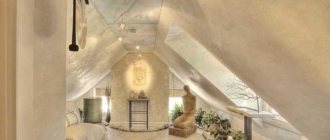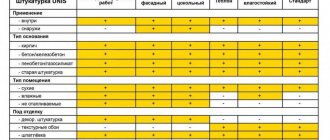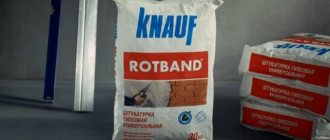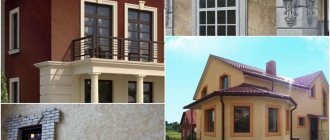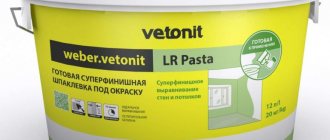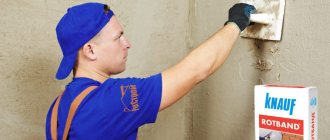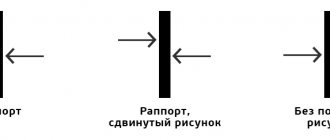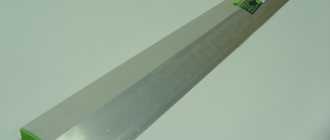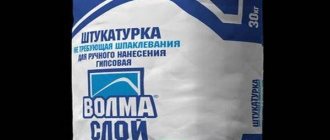Kinds
Before you begin the process of creating exterior or interior decoration of the room, you must select the appropriate finishing material option.
The main types of textured plaster include:
- Acrylic. It is based on acrylic resin. It is presented on the market in plastic containers of various sizes. Does not require dilution, as it is completely suitable for use. It is recommended to use the entire mixture at once, but if necessary, it can be stored in a closed container.
- Silicate. Liquid glass is used as a binding component. This mixture is characterized by impeccable vapor permeability, therefore it is actively used for finishing concrete. It has an increased level of resistance to mechanical stress, maintaining its original appearance for many years.
- Silicone. The main component of such plaster is a polymer resin, which creates the necessary level of protection for the walls from moisture and sudden temperature changes. It can be used indoors and outdoors, and also as a decor for stoves.
- Mineral. For its production, components such as lime and concrete are used, which can be supplemented with sand, quartz or other minerals. It is produced in powder form and requires additional dilution with water until a homogeneous mass is formed.
There are different types of decorative plaster on the modern market, each of which has its own characteristics. Among the large assortment there is both liquid and dry textured mixture. It can be volumetric, roller or structural, since the texture composition of each type is developed individually. VGT textured plaster is in great demand, which is characterized by economical consumption and a high level of efficiency.
How to choose a living room color
The color scheme of this room should be made in shades that promote relaxation, both emotional and physical. Psychologists recommend several primary colors:
- Mint.
- Wheat.
- Light blue.
- Lilac.
- Green.
Despite the popularity of painting walls, many people prefer to wallpaper their walls the old fashioned way.
However, among the variety of this material, it is easy to get confused and not everyone knows how to choose wallpaper for the living room. To make the right choice, several criteria must be taken into account:
- Properties of this or that type of wallpaper.
- Naturalness of the material.
- Price.
- Color (plain or printed).
In recent years, cork or bamboo wallpapers have become especially popular, as they have excellent sound and heat insulation properties and also look great in the interior.
Types of textured plaster
Textured decorative plaster is produced in different types depending on the composition and possible effect of the final coating, so choosing the material that is optimally suited in terms of characteristics and texture will not be difficult.
By appearance
Today, textured plaster compositions are produced in different types according to their decorative qualities, which is achieved due to the inclusion of larger insoluble particles in the composition compared to the main filler. By grouting, you can obtain a coating with the effect of a surface damaged by wood-boring beetles or a voluminous, rough, granular “Fur Fur” type texture. Photo 2. Samples plastered with “Lamb” and “Bark Beetle” A mixture is also available with filler in the form of crumbs of marble, amethyst, onyx and other natural stones, often multi-colored. This material is called “Mosaic” and allows you to get an interesting pebble texture.
By composition
Depending on the binder, the plaster texture mixture is divided into 4 main types: acrylic - based on acrylic resins; mineral – cement acts as a binder; silicone - with polymer binders in the composition; silicate – based on potassium glass.
Colors
For the correct and beautiful design of the space, it is important to be as careful as possible in the choice of colors used in the process of finishing the room. It is worth noting that textured plaster is presented on the world market in a wide variety of colors, including both white and colored mixtures. During the selection process, it is recommended to take into account the fact that the same finishing color may look different on different textures.
Decorative plaster can have the following texture options:
- Matte. Creates a rough and finely porous surface on which the color of the texture is equally beautifully displayed on all sides.
- Brilliant. The smoothest possible surface, the clarity of which is visible only in one direction. From other angles, the color of the wall or ceiling will look somewhat distorted.
- Glossy. It is distinguished by the presence of glare, which can affect the perception of the color scheme of the finish.
Professional designers recommend taking into account when choosing the fact that on a textured surface the color will always be much darker than on a smooth texture.
The style of Venetian plaster
Special skill is required when applying Venetian plaster - this multi-layer coating, originally from the romantic city of lovers, is made by adding marble chips and slaked lime to a dry mixture. During the construction of buildings and the use of marble for their decoration, many small pieces remained, and in order not to waste the goods, they began to be used as a material for wall cladding.
Externally, the coating looks like marble, or made of precious onyx, so it should be done by an experienced plasterer. Apply a solution of Venetian plaster with a rubber spatula and apply the thinnest layer - each layer requires complete drying. The dry mixture is quite expensive, and the work of creating a plaster layer is quite painstaking, but the effect of translucent matte layers justifies all the effort. Most often, Venetian plaster is used to recreate a classical and antique style - it looks especially impressive in the Baroque style.
Different directions of movement of the spatula and methods of applying plaster allow you to achieve a matte and glossy surface of the walls. In addition to stone surfaces, Venetian plaster can imitate the shine of precious metals - thus achieving the effect of expanding the room and complex reflection of light on the wall surface. The dry mixture is produced in bags of 8 and 16 kilograms, and color can be added to it. Before plastering work, the wall must be dry, clean and treated with a deep-action primer, and before priming it must be reinforced and puttied. If the technology for working with Venetian plaster is not followed, cracks may appear, which will then be difficult to get rid of. Often, this coating is used as a basis for bas-reliefs, frescoes and complex panels.
Advantages and disadvantages
Below are the pros and cons of textured plaster.
Among the positive qualities of the material, the following positions stand out:
- This finishing material makes the treated surfaces aesthetically attractive. This design is fresh, not hackneyed and will allow you to decorate the interior in the best style directions.
- The plaster differs in its release form. You can choose the most convenient option, taking into account your own preferences and existing skills in finishing work.
- If desired, you can give the surface a different texture. Often, simple hand waves and a roller are enough to create a beautiful design.
- Finishing surfaces with textured plaster simplifies the work. There is a significant saving in time for finishing walls and ceilings. In this case, the work will take no more than 1 day without taking into account the preliminary preparation of the grounds.
- Textured plaster is durable. Due to its components, it will decorate the finished surfaces for many years.
- The components of the composition are often resistant to ultraviolet radiation. The walls will not become faded over time, and the coatings will not lose their original attractiveness.
- Textured plaster enhances the thermal insulation properties of the bases. Even with a small relief layer, it will insulate the surfaces being treated.
- In most cases, such compositions are environmentally friendly. During operation they do not emit toxic substances. This factor allows the use of mixtures for finishing the walls of residential premises.
- The mixtures are compatible with different dyes. You can change the color of the plaster as you wish.
- If desired, you can add additional components to the composition. For example, for the effect of Venetian plaster, it is possible to include mother of pearl in the mixture.
Among the disadvantages of textured plaster are the following:
- The textured finish is resistant to small mechanical loads, but can break off if subjected to significant impacts. Scratches are also possible if done on purpose (for example, pet claws).
- Caring for such a surface cannot be called easy. During operation, dust settles on the relief surface. It is more difficult to remove than from wallpaper, paint, laminate or drywall.
- Good plaster is not cheap. This is especially noticeable when performing a large volume of finishing work. The ready-made variety is more expensive than others.
- Working with textured plaster does not tolerate delays. If you extend the work process, visual joining of the areas being finished cannot be ruled out.
- When working with textured plaster, the material consumption has been increased by 1 square meter. m of processed area in comparison with other types of finishing.
- Adjusting the surface if necessary is problematic. It cannot be done unnoticed due to the difficulty of selecting the desired shade or pattern.
- If the technology for applying textured plaster is violated, the formation of cracks, swelling and peeling of the material may occur. The solution should be selected carefully based on the type of base.
Properties
The use of plasters has become very popular; it is difficult to imagine an interior without textured plaster. It became in demand due to its interesting texture. In every house there are fragments made in different styles.
Consumers are increasingly choosing this material due to its unique advantages:
- Easy to care for;
- Coating strength;
- Resistant to ultraviolet radiation;
- Moisture resistant;
- Good sound insulation;
- Non-toxic;
- Does not absorb odor;
- Resistant to fire.
Methods for applying plaster can be divided into three main methods:
- Spraying, a special apparatus is used;
- Stretching, using a grater, distribute the solution from bottom to top;
- Application by roller or spatula.
Using the Internet, you can watch a large number of videos and video lessons about applying textured plaster and giving it various textures. The video lesson will clearly and in detail show all the subtleties and secrets of achieving a successful result.
Tools for work
There are many ways to add texture to the applied decorative coating, so there are also a lot of tools and devices.
Basic:
- spatulas (various sizes, shapes, materials);
- graters;
- trowels with rounded corners;
- shaped rollers (for impressions) and paint rollers;
- brushes;
- masking tape;
- mixer;
- sponges;
- level;
- containers;
- rags.
Auxiliary:
- respirator;
- gloves;
- covering material;
- insurance;
- masking tape.
When working at height, do not forget about your own safety, use insurance.
Decorative features
Let's consider what design advantages certain types of plaster can provide us with:
Structural
This species is characterized by an admixture in the composition of large fractions. That is, the mixture will contain marble chips, wood, pieces of pumice, ground brick, etc. These inclusions create the necessary structure of the finished coating. As a result, the wall decoration is uneven, very textured and picturesque, in a modern spirit. Structural plaster is suitable for kitchens and hallways; it can be used to decorate brick and stone.
The most popular type of such plaster is the common and inexpensive “bark beetle”. The name is due to the fact that the “bark beetle” imitates the pattern of tree bark with lines as if eaten by bark beetles. The textured mixture is a bit of a rough finish, but nonetheless very popular. Usually sold in white and gray.
Textured
These types of materials perfectly imitate various surfaces. Thus, textured plaster can create a pattern of brick, leather, stone, even velvet and silk on the walls. The walls of the apartment get an excellent design in a short time. Peculiarities:
- Textured plaster in the interior almost always has color.
- Perfectly hides various wall defects. It will help you get rid of cracks, chips and other imperfections. Imitates both stone and wood.
- Completely replace wallpaper.
We advise you to study - How to disinfect an acrylic bathtub
Flock
This type is also called silk plaster.
Peculiarities:
- They have a special manufacturing technology, which involves the inclusion of natural silk fiber in the mixture. This gives the finished coating a luxurious silk texture, very decorative and luxurious, pleasant to the touch, like wallpaper. This wall design is ideal for the living room and bedroom.
- Silk plaster in the interior is a completely natural material, like brick or wood. The coating allows air to pass through perfectly. This circumstance makes it possible to use silk coating even in children's rooms, kitchens, dining rooms, not to mention hallways.
- Silk plaster, due to its excellent air exchange ability, does not form mold and mildew, so its types are also suitable for the bathroom.
- It is able to additionally protect the owners of the house from extraneous noise and from the cold. Not too voluminous and embossed, looks elegant and decorative.
Marble
Peculiarities:
- The most durable coating of all listed. Looks great in the kitchen and hallway.
- Marble plaster can be made with both large and small fractions. Therefore, it gives scope for choosing exactly the texture that is needed in a particular case. The color can also be any. It is very voluminous and embossed. Walls covered with this type of material will look great for a long time.
You can also separately note the quartz type of decorative plaster. In this case, small particles of quartz are added to the mixture, which gives the coating a soft shine and texture. Usually it is white, less often - colored. Quartz plaster is distinguished by its ability to withstand significant temperature changes. Therefore, it may be suitable for country houses in which people do not live all year round and, accordingly, do not heat them in winter. It can also be used to design the walls of high-temperature kitchens and cold hallways.
Venetian
Peculiarities:
- This type of wall covering for an apartment, although the most expensive, is at the same time one of the most decorative and visually attractive. Moreover, the older the finish becomes, the more decorative it looks. This is an interesting effect inherent in Venetian plaster, uncharacteristic of most finishing materials, including popular wallpaper.
Venetian plaster in the interior has excellent artistic properties. With its help, you get real highly artistic abstract paintings on the walls, even in the bathroom. And it seems like it was created for the living room and bedroom.
With its help, you can change the color of the walls to any color, which greatly simplifies the design. The disadvantages include the expensive price of the coating and the need to invite only an experienced craftsman to carry out the project.
Application methods and options
For different types of premises, certain options for finishing with textured plaster are provided. Each option can transform the appearance of the interior, making it truly unique and inimitable.
There are two methods of creating decor using this material:
- Creating patterns using special tools. This option is less expensive and lightweight, so it is in great demand.
- Applying the ornament using a textured roller. This technique allows you to create a clear and neat pattern with a uniform texture.
Also, in order to create a pattern on a specific surface, ready-made stamps are often used. By applying them to a plastered wall, you can get a very beautiful pattern or ornament. Immediately after finishing the process of applying the texture, it needs to create conditions for complete drying, which lasts at least 24 hours. Only after this can excess plaster be removed, primed and painted.
It must be remembered that in the process of creating such decor you should not penetrate deep into the base of the wall. After all, after the plaster has completely dried, the created decorative elements may simply fall away.
In rooms that are subject to frequent mechanical stress, it is recommended to cover textured plaster with wax or colorless varnish. This will preserve the original qualities of the material, its practicality and aesthetics.
In the kitchen
In order for the kitchen to be not only cozy, but also functional, you need to be as careful as possible in the decoration of its walls and ceiling. Thanks to its excellent waterproofing and soundproofing qualities, as well as environmental friendliness and the absence of seams, textured plaster is an ideal solution for finishing this type of premises. When decorating a kitchen interior using this finishing material, you should consider the following recommendations from professional designers:
- Choose the right color palette. It should be harmoniously combined with furniture, flooring and other accessories.
- Use plaster on one wall only. An excellent option for zoning a space or focusing attention on a specific wall.
- Use for finishing the ceiling. A neat light ceiling will give the kitchen freshness and lightness.
For small kitchens it is better to use fine-grained textured plaster, and in larger rooms it is recommended to use a mixture with a large relief. A protective layer of varnish or wax will help ensure the durability and practicality of this finish.
In the children's room
Due to its many positive features, textured plaster is considered an ideal material for decorating children's rooms. Using this universal material, you can create almost any surface that will perform not only an aesthetic function, but also a practical one. Using special stencils, it is possible to apply a wide variety of designs to the walls or ceiling. Designs in the form of sea waves, clouds, geometric patterns, cartoon characters and other interesting images are in great demand in children's rooms.
It is better to give preference to options with a higher level of wear resistance. If you need to change the interior, you can simply repaint the walls and ceiling to get a completely new design. In some cases, textured plaster is used as a protective layer that is applied to the surface of children's furniture. This approach helps preserve its original qualities for many years.
In the bedroom and office
Since textured plaster is quite resistant to fading and delamination, it is actively used to decorate walls in bedrooms and offices. Its texture, color and thickness can be very different, depending on wishes and preferences. Using this mixture and special tools, you can create a unique design in your bedroom, as well as hide any unevenness or other imperfections.
When starting the process of decorating the bedroom, you need to take into account the volume of its space. In small rooms it is recommended to use light shades, while in larger rooms dark shades in the form of certain accents will be appropriate. In bedrooms with large volumes, a combination of several shades and types of textured plaster is allowed, which are harmoniously combined with each other, maintaining a cozy atmosphere.
For a north-facing bedroom, it is recommended to use beige, coffee, pink and orange tones. Rooms with good natural light are best decorated in green, blue, gray and red colors.
When designing a home office, you should adhere to a strict and restrained style. The design of the walls and ceilings should be combined as much as possible with furniture and other interior items. The office with antique finishes, concrete, brick and velvet looks stylish and beautiful. Each option is attractive in its own way and creates a favorable atmosphere for the work process.
In the corridor
Decorating a corridor or hallway requires a special approach. After all, it is the corridor that creates the first impression of the house, as well as its owners. It is worth noting that the walls here are subject to daily stress, which can cause dirt, scuffs and chips. Therefore, when choosing textured plaster, it is recommended to give preference to durable and most practical options.
Using this finish, you can create a unique corridor design with a clearly defined relief surface that imitates natural wood, stone or other materials. It is quite easy to care for this finish, which allows you to maintain its original appearance for many years. In addition, a stylish and neat corridor can make a good impression on guests and become a real calling card of the house.
Stages of plastering work
It is recommended to study the application of textured plaster composition step by step in order to understand all the features and avoid common mistakes.
Before applying textured plaster with your own hands, you will have to carry out preparatory measures in order to ultimately obtain an even and beautiful coating. The following work needs to be done:
- remove the old covering layer - paint, wallpaper, facing tiles, plaster;
- carefully examine the wall surface, determine the type and quantity of starting materials needed for preparation;
- cut down the tubercles, repair uneven areas, cracks and chips. If the damage is minor, it is recommended to use putty or starting material;
- Having leveled the surface, grinding is carried out on it to achieve maximum evenness;
- remove dust accumulated during work.
It's time to use a primer that has deep penetration. The composition should be selected taking into account the type of wall surface. It must have maximum penetrating power to bind small particles, align cracks and the overall structure of the base. The treatment should be carried out with a mixture containing quartz sand in order to increase the level of adhesion of the plaster solution to the wall surface.
The primer solution is applied with a roller; in hard-to-reach places, a brush is used.
Once the first layer of soil has dried, it is recommended to re-treat it to strengthen the crystalline structure formed on the wall surface.
To prepare the base, use a white primer to visually track which areas remain untreated. In addition, the shade of the primer will not change the color palette of the textured solution.
How to apply textured plaster on walls? The work is simple, but requires some attention. Study the manufacturer's instructions and prepare a solution.
Apply it with a spatula. Uniformity may not be observed; the main requirement is to cover the entire wall. Using a trowel, smooth the solution, forming a layer about one and a half millimeters thick.
All that remains is to create the texture using the appropriate tools and using a certain technique. This is best done with a roller, trowel and stencil.
Manufacturers
The textured plaster market is crowded with offers for buyers of different circles. Italian manufacturers have achieved great success in this field. Among the wide range of offers, there are several companies that have received high praise from specialists in the field of construction and renovation:
- Tamstucco is a paste-like variety based on vinyl polymer.
- VGT is a special plaster with synthesized artificial components and crushed rock materials. It is resistant to snow and rain.
- Intonachino Minerale is a mineral material based on lime and quartz sand.
- Stuccofacile is a plaster that is resistant to shrinkage and cracking, designed specifically for creating bas-reliefs.
Types of finishing materials: names and descriptions
There are several types of decorative plaster and they differ in the binding substance. It can be silicone, acrylic or other materials. This does not change the functions and appearance of the plaster, but it affects its durability and sometimes its texture.
Silicone
The composition of this coating includes a number of resins making it elastic and durable. However, this composition is quite expensive. It also contains dyes and antifungal agents.
This type of plaster has such characteristics as moisture resistance along with air conductivity. It is also quite durable, does not fade over time, is easy to clean and fits well on any type of surface: concrete, brick, drywall, etc.
Silicone plaster is sold in finished form, which eliminates errors when mixing. When working, it fits well on the wall, but the surface must be carefully primed before doing this. Moreover, the composition of the primer should be exactly what the putty manufacturer recommends. This ultimately makes the work somewhat more expensive than when using other types of coating.
Silicate
This type of decorative plaster contains silicate liquid potassium glass. It is the connecting element. This makes the coating the most durable among other types.
But we must remember that potassium glass is dangerous to human health, which is why this type of plaster is used only for facade work. Its strength allows manufacturers to guarantee the preservation of quality for 20 years of operation.
Mineral
Mineral plaster includes several elements - cement, lime, minerals, small fractions of stones and even clay. This type is sold in the form of a dry mixture, packaged in bags. The price of the composition is the lowest among decorative plasters.
The mixture is applied to the walls easily and quickly. It can be used both for facade work, because it is quite durable, and for interior spaces, because the mixture is absolutely safe for humans.
The disadvantage of mineral plaster is that it needs to be applied in a thin layer, so the preparation of the walls should be as thorough as possible, with preliminary grouting of all irregularities and crevices.
Important If the layer is thicker than specified by the manufacturer, the plaster will easily crack and crumble, as it has very low elasticity.
Acrylic
It is the most versatile among other types. The binding element in it is acrylic resin. This allows you to add any coloring pigments to it.
In addition, this type of plaster is durable, dries quickly, and at any level of humidity in the environment. Manufacturers provide a 15-year guarantee, and the plaster can be washed and coated with it both on premises and on building facades.
The disadvantages of acrylic plaster include its fire hazard and poor breathability. In addition, it weakly resists ultraviolet radiation, fades and cracks under its influence. The plaster is sold in finished form, packaged in containers of various sizes.
How to make the material yourself?
Today it is not difficult to make decorative plaster yourself. For example, regular putty using some additional ingredients is suitable for this.
With PVA glue
First of all, you need to take ordinary white putty, mix it with water in a special container in proportions 6: 2. After this, you need to add 0.2 liters of PVA glue and stir until completely homogeneous.
If you don’t have such glue on hand, you can replace it with a grout mixture intended for drywall in a 1:1 ratio.
With primer
The main components remain a white powder composition and a primer, the proportion should be approximately 6: 2. The mass is kneaded until the texture of thick sour cream, after which a grout mixture or pigment is added if colored plaster is needed. The solution is stirred again and applied to the walls.
With plaster
For such plaster, a gypsum variety and water are used. The proportions of the composition remain the same: 6 to 2. However, for viscosity, you will have to improve the mixture with PVA glue (0.2 l). After the first mixing, leave for a few minutes, then mix again and begin finishing work.
With baby
A marble effect can be obtained by mixing regular putty with marble chips in the following ratio: 1 part crumb to 4 parts putty. The mass is kneaded in a special container, adding water at room temperature until it reaches the consistency of thick sour cream. If you need a colored finish, you will have to paint it after the surface has dried.
Venetian
Here you will have to buy a special putty. To recreate the desired effect, it is necessary to include marble, quartz, malachite chips, lime and pigment in the composition. Do not dilute the powder mixture with hot water. The consistency should not be too thick - this will not give the desired effect.
Versailles
The recipe consists of a starting and finishing powder-based putty, acrylic paint and regular silver powder. The ratio of components is 1: 1. Serebryanka is used after the textured surface has dried.
How to apply decorative plaster
Clean the base from any decorative coatings, paint, or anything that may peel off. Get rid of greasy and dirty stains, construction dust and small fibers. Use regular putty and sealant to patch cracks, potholes and other defects, and dry.
Be sure to apply a primer that matches your type of plaster. It improves the adhesion of the finish to the wall so that in the future the plaster does not fall off in pieces. Use primers with beneficial additives, such as fungicides or antiseptics.
If you have a thin-layer and finely dispersed mixture, it is better to apply a leveling layer first. This is a traditional starting putty with a coarse filler like sand. Vary the number of layers depending on the situation, but be sure to dry everything and coat it with primer again.
Decorative plaster is applied with a spatula using wide strokes, directly or in an arc. You can create texture with a trowel by pressing it against the wet mortar and sharply pulling it back. It’s even easier to take a roller that already has the desired design applied to it. To give relief, various available materials are suitable - sponge, film, fabric, brushes, everything is used.
Repair of texture defects
The difficulty of repair is one of the disadvantages of textured plaster coating. If you can still manage to recreate the decorative texture, making it less noticeable, then it is impossible to choose the exact color to match the previous color. In this case, it is recommended to repaint the entire wall.
Use a rubber hammer (or a plastic handle of a spatula or chisel) to tap the wall, identifying the peeling areas. The loose material is completely removed. The exposed base is cleaned, repaired, primed, and dried. For the “patch” they take the same
To repair a defect, you need to tap the wall to identify areas with peeling coatings. Carefully remove any loose areas. If necessary, repair the base. Prime and dry. Before applying the patch, moisten the edges of the old coating with water to ensure good adhesion.
The plaster composition must be taken with the same base as the old one.
It is better to make patches in a rectangular shape. To restore the drawing, you should practice on a small area.
Preparation of various surfaces
The surface to be plastered with finishing mixtures must be properly prepared. Not only the service life of the decorative plaster coating, but also its aesthetic qualities depend on this. But the technology of work may vary depending on the material from which the walls are built.
Brick
The preparation of brick walls is carried out in the following sequence:
- Cleaning the surface with a metal brush to remove dirt, as well as residues and build-up of solution.
- Dust removal - for this, the walls can simply be washed with water.
- After drying, treatment is carried out with a deep penetration primer. Instead, you can spray the pre-moistened base with a liquid solution.
- After the primer layer has dried (from several hours to a day) or sprayed (2-3 days), leveling is carried out - applying the main (base) layer of plaster with a thickness of 7-10 mm or more, depending on the quality of the surface. On thick layers, reinforcement with plaster mesh will be required.
- After drying, decorative compositions can be applied.
Photo 8. Cleaning brick walls with a metal brush
Concrete
The technology for preparing concrete walls for applying finishing material requires the following work:
- Cleaning the surface of dirt, debris and mortar.
- Checking the vertical and horizontal level. If vertical deviations exceed 10 mm when leveling walls with plaster, it is advisable to use a metal plaster mesh for additional reinforcement.
- To ensure high adhesion strength of the plaster to the base, the concrete must be additionally treated with a “Betonokontakt” type primer.
Photo 9. Priming concrete walls before plastering
Porous and lightweight concrete
The technique for preparing facades made of cellular concrete depends on the method of production of the masonry material. Non-autoclaved blocks are formed in special molds, the walls of which may be coated with oily compounds to facilitate their removal. To ensure high adhesion strength to such a surface, oil contaminants must be thoroughly washed off with water or special means.
Cladding the external walls of a house made of autoclaved cellular concrete with decorative plaster is simpler, since blocks of the required dimensions are formed by sawing. But they are characterized by high moisture absorption, so before plastering the walls must be carefully treated with a primer. Such products not only increase adhesion, but also additionally strengthen the surface.
Photo 10. Priming walls made of aerated blocks before applying plaster mortar
Tree
Wooden houses are usually lined with siding and other finishing materials, which involve the arrangement of a ventilation gap. But with proper preparation, plastering is also possible. The difficulties are caused by the fact that wood is prone to absorbing moisture from the air and subsequent swelling, and this can cause cracking of the façade plaster layer. This disadvantage can be neutralized using special impregnations with hydrophobic and antiseptic properties.
An equally important task is to ensure a high level of adhesion of the mixture to the wooden base. To do this, the facade is upholstered with shingles.
Photo 11. Installation of shingles on a wooden facade for subsequent plastering
Thermal insulation materials
The most common types of insulation used in construction are polystyrene foam or ultra-dense polystyrene foam and vapor-permeable mineral wool. Insulation is usually carried out using the “wet facade” technology, where after installing the heat-insulating material, the surface is plastered.
A special plaster mixture (also called “basic reinforcing composition”) is applied to the walls, after which a fiberglass mesh is embedded in it and the coating is carefully smoothed. After hardening, the facade is sanded and you can begin to apply the decorative mixture.
How to return a flat wall
If you decide to wallpaper the room or make a smooth plaster finish, the previous relief layer of the material will be a hindrance. In this case, two options are possible:
- remove the old layer of finishing,
- level the raised protrusions by applying putty.
The previous finish with a sandy bottom texture is cleaned with sandpaper, dust is removed, the surface is primed, and leveled with finishing putty.
The old relief finish is removed in several stages. The wall surface is moistened with hot water to make removal easier and less dust generated. If the finishing to be removed is laid on a paint layer, it is heated with a hairdryer, then the previous plaster material will be removed along with the paint.
To remove the relief layer, use a spatula with a hammer, a grinder or a scraper. Remains of plaster material are removed using a wire brush. The freed wall is dusted and primed. After the primer has dried, a leveling layer of putty is applied to the resulting smooth base.
Textured coverings, from the simplest to highly artistic bas-reliefs, are a worthy decoration for any interior style. Having become familiar with several methods of applying texture, those who wish can implement the ideas they see or their own with their own hands, creating a unique design for their home. The main teacher is practice.
Creating a textured surface without special material
It is clear that textured putty is not cheap and it is beyond the means of most people. Well, if we decide to bring beauty to our own home, we will always find a way out.
In this case, the solution is ridiculously simple - do-it-yourself textured plaster from ordinary putty. So, if a certain section of the wall needs to be treated with this method, then it is covered with masking tape.
If the wall is all over, then, accordingly, masking tape will not be useful. The putty is usually applied with a spatula, spreading evenly over the surface.
The layer of this plaster should be no thicker than 10 mm. The layer should set a little, only in this case do they start decorating.
Tips and tricks
Textured plaster is the optimal solution for finishing walls both indoors and outdoors. With its help you can create almost any texture on a particular surface.
When starting interior design, you must consider the following tips and recommendations from professional specialists:
- Apply textured plaster to a slightly rough surface so that the solution can adhere well.
- It is better to opt for ready-to-use formulations. If there is a need to make mixtures yourself, then first of all you need to carefully study the instructions on the packaging and only then begin the process of making the solution.
- During the work, use only tools, rollers and brushes specially designed for these purposes.
- After applying the plaster, it should be left for 24 hours until completely dry.
By following these simple recommendations, you can create a truly unique interior in a residential or public space based on your personal wishes and preferences.
Structure and fillers of plaster
Through the use of special tools and the use of various additives, the type of coating changes. In the photo of textured plaster you can see the structure and relief that fillers form.
The more common mineral fillers are marble, granite and quartz chips.
Many manufacturers use polymer granules, cellulose and silk fibers as additives. Each filler is individual and gives an interesting effect.
If you are new to applying plaster, then the manufacturer does not advise you to immediately take on large amounts of work.
Textured plaster for walls is a very interesting material to work with, but it is advisable to take training courses first. You can achieve various types of textures using stencils, textured rollers, and trowels.
Reviews
The use of textured plaster allows you to make the interior of your home special. This is eloquently evidenced by numerous reviews from those who have decorated their home with similar decor. Comments left on forums dedicated to construction and renovation indicate that such finishing can be done in any room. The reviews also noted the fact that with its help you can decorate even “problem” areas of the apartment.
For example, a roller mixture looks harmonious on a loggia or balcony. At the same time, being resistant to temperature changes, it does not change its properties, holds up well and does not crack. In addition, the comments indicate the possibility of painting certain types of plaster coating.
However, if you need to varnish the plaster, you will have to dilute it by half with water. Otherwise, according to the experts, the finishing surface will be damaged by a visible film.
Users note the disadvantage of ready-made mixtures is their poor color range. Sometimes fine-textured plaster seems like too expensive a coating. However, everyone agrees that you need to buy quality finishes.
Interior use
Textured plaster is perfect for the bedroom because it consists of environmentally friendly elements. If the room is small, it is better to choose light colors and large patterns in order to visually increase the size of the room.
If you are thinking about what to choose for finishing your bathroom, decorative plaster is your choice. It has several advantages: vapor permeability, ease of maintenance and the ability to create a unique interior.
If you need textured plaster for the kitchen, it is better to choose acrylic, as it is environmentally friendly and is not afraid of water getting in during cleaning.
Combination of finishing materials
The combination of different types of finishing is suitable in rooms whose interior is complex or unusual in nature, there are niches, arches, level differences in height, or, for example, sloping ceilings and walls in the attic floors. Alternating a smooth or glossy surface with texture and unusual relief will give the interior a special originality. Similar experiments will emphasize the boldness of the design author’s decisions and, of course, will impress the guests.
Bright interior of the hallway of the room. Large hallway with textured plaster.
DIY making
Textured plaster is much more expensive than conventional finishing materials. This forces many craftsmen to make it themselves, using ordinary putty or other, simpler and cheaper mixtures. They are purchased at construction stores, which is not difficult and does not require significant expenses.
The situation is more complicated with the filler. In the manufacture of textured plaster, different components are used, which have their own properties and form the corresponding types of relief. As a rule, coarse river sand, stone chips or dust (waste from stone-cutting equipment), various fibers or small shells are used in homemade textured plaster.
These materials are obtained in different ways, some get them through familiar employees of specialized enterprises, or they collect the necessary materials in places of natural formation. Here you can be creative and make plaster using non-traditional types of filler.
However, it is not recommended to add components of plant or organic origin to the mixture - they will rot and can ruin the appearance of the coating.
From putty
This is the simplest and cheapest coating option. PVA glue is added to ordinary gypsum putty (you can replace it with a deep penetration primer) and applied to the prepared wall, creating a relief with a piece of crumpled paper (polyethylene) or a special relief roller. This mixture takes longer to dry, but forms a fairly durable finishing layer. It is recommended to paint it with water-based paint of the desired shade.
From ordinary solution
You can make a mixture of the “bark beetle” or “lamb” type from ordinary sand-cement mortar. You will need stone chips of a certain size (for the “bark beetle” they use a homogeneous fraction, but for lamb it is better to take crumbs of 2-3 sizes). The filler is mixed with the solution in the required ratio, convenient for application.
More complex formulations
You can make textured plaster in a more complex way. First, a binder base is made using a mixture of gypsum and lime, to which liquid glass is added. Then the resulting composition is mixed with a filler - granite or marble chips. The resulting material is similar to silicate plaster and is intended for exterior facade decoration.
Application technique
There are many methods for applying textured plaster. They are based on the properties of the material (mainly the size and shape of the filler particles).
The most popular options are:
The “bark beetle” surface is made by rubbing the material with a flat grater. First, apply a layer using a spatula, then spread it over the plane with a grater. At the same time, the stone chips form grooves and depressions similar to insect passages;- “fur coat” or “lamb” is made in different ways. This can be spraying, spraying with a brush or a regular broom. It is necessary to have the skill to ensure that the material is applied to the wall and not to the floor or surrounding objects;
- some types of relief are formed from a layer of plaster that has already set slightly. Use a crumpled piece of paper or polyethylene, a roller tied with a rolled-up cloth, or a special paint roller with a textured surface;
- a pattern on the surface of the plaster can be created using a gear rack (this is how they imitate the texture of wood or create a geometric pattern);
- Some specialists perform complex surface treatment, manually carving stonework patterns on it, or creating various types of images. This is the most complex technique, requiring the master to have skills and developed artistic flair.
Any technology requires preliminary preparation. It is recommended to start work from inconspicuous areas in order to gain some experience and gain the skill of making relief.
putty
The seams of the brickwork must be leveled; for this, the mortar is applied in a continuous layer and rubbed in manually or with a power tool until the wall is level and smooth with little indication of the direction in which the finishing material is laid. In the future, this factor is corrected by primer layers. If the wall has already been plastered, but there are holes or cracks in it, these defects are corrected with putty and a spatula.
Chic design of the hallway room Textured plaster

